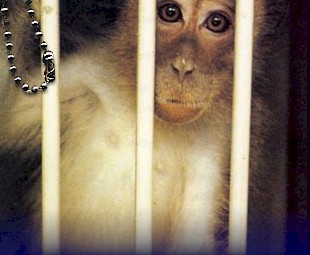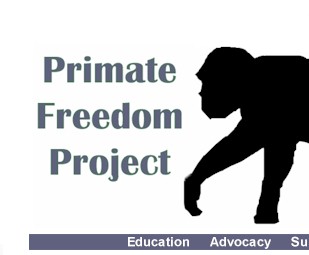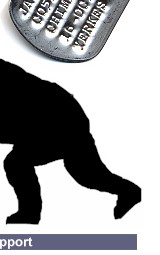






|
||||||||||||||||||||||||||||||||||||||||||||||||||||||||||||||||||||||||||||||||||||||||||||||||||||||||||||||||||||||||||||||||||||||||||||||||||||||||||||||||||||||||||||||||||||||||||||||||||||||||||||||||||||||||||||||||||||||||||||||||||||||||||||||||||||||||||||||||||||||||||||||||||||||||||||||||||||||||||||||||||||||||||||||||||||||||||||||||||||||||||
The American Association for Laboratory Animal Science (AALAS) [This essay is in progress and currently unfinished] According to Craig Frisk, the 2002 president, AALAS is the “largest laboratory animal science association in the world,” and there is no reason to doubt that he is correct. The AALAS Foundation is the association’s propaganda arm and engages in public outreach and “education”. Mr. Frisk wrote to the AALAS membership about the AALAS Board of Trustees’ call for an increase in propaganda. [July 2002 issue of the AALAS journal, Contemporary Topics in Laboratory Animal Science.] Mr. Frisk announced that the AALAS Foundation has responded with the development of a strategic plan with one primary objective: “Support efforts to educate the public with the message that animals used in biomedical research are very well cared for.” Mr. Frisk called the membership’s attention to the Kids 4 Research web site and the teacher workshops sponsored by AALAS, but said that more effort was needed. He said that the organization had not effectively influenced the opinions of “members of Congress, state and local legislators, teachers, physicians, nurses, dentists, farmers, pastors, priests, [or] parents.” AALAS claims that it “educates” the public. But, if this were true, the organization would not sponsor a propaganda campaign with the primary goal of convincing the public that the animals in American labs are well cared for. AALAS might be able to claim that they are working to improve the care of animals in laboratories, but Mr. Frisk’s claim that “we are wise stewards and compassionately care for all animals used in research” is either profound self-delusion or else a calculated lie, and this is easy to demonstrate. Case 1: The Coulston Foundation Case 2: The Oregon Regional Primate Research Center Case 3: The University of California, San Francisco In each of these cases, the evidence is contrary to the claims being made by AALAS president, Craig Frisk. There are more examples that could be cited, such as the California Regional Primate Research Center, the Wisconsin Regional Primate Research Center, Barrow Neurological Institute, The University of Ohio, or the University of Florida, to name but a few. But the three cases listed above are stark, well documented, and are long-standing. The Coulston Foundation (TCF) In 1993, three chimpanzees, Robert, James and Raymond, overheated to death after the temperature in their cells reached 150 degrees. In 1994, the National Institutes of Health found that TCF did not have an adequate veterinary program. In the same year, four monkeys died of thirst. In 1995, the United States Department of Agriculture (USDA) filed formal charges against TCF over the chimpanzee and monkey deaths cited above. In 1997, two chimpanzees, Jello and Echo,died due to incompetent veterinary care. More chimpanzees died in 1997 due to a disease outbreak, and the USDA again cited TCF. In 1998, another chimpanzee, Holly, died due to negligence; the USDA filed formal charges against TCF for the deaths of Jello and Echo and the failure to provide adequate veterinary care; two more chimpanzees, Terrance and Muffin, died from in the same manner as Holly and the USDA launched an official investigation into the three chimpanzee deaths; TCF began a controversial series of experiments with chimpanzees on spinal disk replacement. In 1999, USDA cited TCF for not providing a psychological enrichment program for almost 1,000 primates and for housing chimpanzees in single cages; also in 1999, USDA filed formal charges against TCF for the negligent deaths of Terrance, Muffin and Holly and the failure to provide them with adequate veterinary care; in 1999, Eason, one of the chimpanzees being used in the spinal experiments died which led to another citation by the USDA. Also in 1999, Donna died. She had carried a large, dead fetus inside her for weeks, resulting in a massive infection and uterine rupture. TCF veterinarians removed one liter of pus from her abdomen, and observed the fetus’s skull poking through her torn uterus. Donna had rotted while still alive. She died the day after surgery. USDA cited TCF again for the negligent deaths of three more chimpanzees. In 2000, an accrediting body reported that inadequate veterinary care may have contributed to the deaths of 17 chimpanzees over the previous 2 years. TCF recently collapsed. All control of the monkeys and chimpanzees was assumed by the Center for Captive Chimpanzee Care (CCCC), a non-profit chimpanzee advocacy organization. This change occurred in spite of inaction by AALAS. The Coulston Foundation had the largest single holding of chimpanzees in the world, with approximately 600 animals on hand at one time. The problems at the facility suggest that AALAS president, Craig Frisk is either ignorant of the realities of animal labs, or else wishes to fool the public into imagining that there are no problems, that he and his ilk are “wise stewards and compassionately care for all animals used in research.” The Oregon Regional Primate Research Center (ORPRC) The National Institutes of Health’s Regional Primate Research Centers have begun calling themselves the National Primate Research Centers. Such bluster is feeble camouflage for the horrors occurring daily behind these gated monstrosities. The name change is a masquerade, and I will continue to refer to them as the Regional Primate Research Centers (RPRCs) in this essay. ORPRC had its secrets exposed to the light of day when an animal care technician, Matt Rossell, secretly photographed and videotaped the facility for over a year. One of the experiments he brought to light was the work of Daniel Casey. Mr. Casey had been administering psychotropic drugs to a group of capuchin monkeys for many years. The monkeys had developed muscle rigidity and a lack of coordination. ORPRC claimed publicly that their in-house oversight committee, the Institutional Animal Care and Use Committee, the IACUC, had reviewed Mr. Casey’s important work often and that it was of the highest caliber. Behind the scenes, even other vivisectors at ORPRC were alarmed by the condition of the monkeys and pressured ORPRC to halt the experiments. The monkeys were sent to two zoos. In another situation, a male monkey was videoed while a technician electro-shocked his penis to extract semen. The procedure had been performed on him hundreds of times. Jane Goodall viewed the tape and commented that the procedure was not humane (a polite British euphemism for cruel.) A USDA inspector tried to report the situation at ORPRC to her superiors, but they told her to ignore the problems. She documented the many monkeys housed in outdoor “corrals” who had to wade through feces and scum covered puddles to reach their food. Monkeys died during a disease outbreak. ORPRC blamed the problems on El Nino. Monkeys at ORPRC routinely display behaviors that demonstrate the effects of long-term solitary close confinement. They gnaw and chew their arms, they spin and rock repeatedly, they pull their hair out and experience chronic diarrhea. The documentation of the sad reality at ORPRC is extensive and includes video taken by the researchers themselves that they were forced to surrender following a successful lawsuit. It includes a document stack many feet high. The problems at ORPRC have received much attention by the media. The problems at this facility suggest that AALAS president, Craig Frisk is either ignorant of the realities of animal labs, or else wishes to fool the public into imagining that there are no problems, that he and his ilk are “wise stewards and compassionately care for all animals used in research.” The University of California, San Francisco
(UCSF) UCSF is the fourth leading recipient of funding from the National Institutes of Health and is focused upon becoming number one. At stake is nearly a half a billion dollars annually in public funds. Whistleblowers have routinely reported details of the problems at USCF such as the number of baby monkeys who have died unexplainably and the lack of veterinary care for animals suffering as a result of the experiments conducted on them. The problems at this facility suggest that AALAS president, Craig Frisk is either ignorant of the realities of animal labs, or else wishes to fool the public into imagining that there are no problems, that he and his ilk are “wise stewards and compassionately care for all animals used in research.” Much could be written about the animal care and suffering at all these facilities and many others, but this essay is primarily concerned with AALAS itself. The 53rd AALAS National meeting was held in San Antonio, Texas from October 27-31, 2002. The July 2002 issue of the AALAS journal, Contemporary Topics in Laboratory Animal Science was essentially an advance program for that event. Listed in the journal are abstracts of 57 papers that were presented along with the abstracts of 175 poster presentations. A look at these abstracts can teach us much about the real work of AALAS, what they really mean by public education, as well as what is going on in laboratories around the country. [Note: I have elected to highlight only those presentations involving primates, AALAS propaganda, and a few other miscellaneous topics.] Primate Studies Sanctioned by AALAS Canadian researchers M.E. Olson, J. Johnson, E.W. Rud, and C. Power presented, “Xeno-Infection of Nonhuman Primates by Feline Immunodeficiency Virus.” They infected two macaques with FIV, watched them for a few weeks, and then killed them. The monkeys lost weight and their white cell count dropped. The researchers concluded that: “the use of lentiviruses in human gene therapy of nonhuman cells and organs in xenotransplantation carriers the risk of zoonosis and establishing sources of new human pathogens.” (sic) C.E. Hotchkiss, of the Bionetics Corporation and M.G. Paule, of the Food and Drug Administration’s National Center for Toxicological Research in Arkansas presented: “Effects of Pair Housing on Operant Behavior Task Performance by Rhesus Monkeys.” A few years ago, other researchers from the National Center for Toxicological Research demonstrated that monkeys dosed with marijuana were still better at manipulative tasks than human children. Their explanation was that monkeys were able to use their feet. In the current breakthrough, the scientists reported that: “Sixteen young, male, individually housed, trained rhesus monkeys … were divided into four age cohorts … within each cohort two randomly selected subjects were pair housed, while eight age-matched controls remained individually housed.” The scientists tested the monkeys’ responses on four tests. They concluded that: “pair housing may have no affect on some operant behaviors while affecting others in the same subjects. This possibility should be taken into consideration during determination of housing options.” Comment: Individual housing of macaques is inherently cruel. The fact that the researchers started with individually housed monkeys suggests that the folks in Arkansas have that down-home disregard for the suffering of those they consider beneath them. Randomly placing monkeys into paired caging is inherently cruel. Monkeys need time to get to know each other, and careful attention to their social dynamic needs attention prior to such grouping. Bullying and severe wounding is not unlikely in such situations. These realities should be taken into consideration during determination of housing options. As was mentioned above, monkeys at ORPRC (and essentially all large primate labs) pull their hair out. In the jargon of the primate labs, this is referred to as “over-grooming.” L.A. Tully, M. Jenne, and K. Coleman of ORPRC presented: “Paint Roller and Grooming Board as Treatment for Over-grooming Rhesus Macaques.” The investigators wrote: “Laboratory monkeys living in cages can develop behaviors believed to indicate diminished psychological well-being. One of the most pervasive is self-directed over-grooming. Some monkeys groom their own hair to such a point that they are almost bald.” They went on to explain that such monkeys are given “grooming boards” in the hopes that the monkeys will groom them instead of themselves, but that, largely, this intervention is unsuccessful. They bemoaned the fact that preparing these grooming boards is time consuming, and that an easier alternative would be preferable. So, they tried paint rollers. The team reported: “[O]ur preliminary data suggest that neither grooming boards nor paint rollers affect over-grooming behavior after 6 weeks.” Comment: It appears that ORPRC staff is acknowledging that there is pervasive and diminished psychological well-being among the monkeys at ORPRC. This is contrary to what ORPRC reports to the public. The duplicity in the ORPRC’s public and private statements underscores the hidden reality of animal research and exposes the AALAS claims of well cared for animals. In fact, monkeys in labs are not well cared for simply because a laboratory environment is anathema to a monkey’s psychological well-being. Claims to the contrary are spurious. In the early 1970s, Lawrence Kohlberg, a professor at Harvard University developed a theory of moral development. He demonstrated that people typically progress through three definable levels of moral reasoning, commonly labeled: Pre-conventional, Conventional, and Post-conventional. Pre-conventional moral behavior is motivated by a fear of punishment and obedience to some authority figure such as a parent or teacher. Conventional moral behavior is motivated by a desire for approval and obedience to the law. Post-conventional moral behavior is motivated by a concern for others and obedience to individual conscience. Kohlberg felt that most people’s moral development stalled at the second, or Conventional level. AALAS and its members are clear examples of such stalled moral development. Researchers from the pharmaceutical giant Schering-Plough and from the University of Pittsburgh presented: “Development and Implimentation of a Novel, Three-Tiered Staff Training Program for the Care and Use of Nonhuman Primates,” and “Proactive Compliance, A Team Approach to Revitalizing Primate Enrichment,” respectively. In the first presentation, the authors explained that their new training procedures would insure regulatory compliance. The second paper explained that the facility wished to be “pro-actively compliant” with the new regulations they expected to be forthcoming from the USDA. The absence of a primate well-being-focused motivation for the changes in procedure at these two facilities make a mockery of AALAS claims that the care afforded the animals is motivated by compassion. J. C. Resendez, of Sierra Biomedical, a Charles River Company in Sparks, Nevada, presented the poster “Strategies for a Successful Pre-Clinical Continuous Infusion Program in the Nonhuman Primate.” Resendez’s poster describes current methods for continuously injecting chemicals into monkeys – a tether, or leash system – and the newer methods that entail a jacket fitted with a battery operated pump and container of the chemical. In both systems, catheters are surgically implanted in the monkeys. Resendez stated that both systems have proved “successful in a large contract research organization.” Researchers from the giant pharmaceutical company, Merck Laboratories, presented the poster, “An Alternative Method of Chronic CSF Collection in Conscious Rhesus Macaques.” The researchers reported that the standard methods require expensive equipment and “exteriorized hardware that is cumbersome to maintain and unaesthetic.” They reported that they have used their method of chronic cerebral spinal fluid collection on conscious monkeys for six months, and that their new system is “easier to maintain and more aesthetic.” Comment: The focus on the improvements for the researchers is another example of stalled moral development. No mention is made of the effects of either system on the monkeys. S. Lippert. M. Lane, T.J. Baird, and S. Godin, of MPI Research in Mattawan, NJ, presented: “Collection of Expired CO2 from the Nonhuman Primate Using lexan Chambers in Conjunction with Stainless Steel / Plexiglas Mteabolism Cages.” The authors explained that: “Previously established techniques for measuring CO2 and organic volatiles have possessed some undesirable characteristics that have led to technical difficulties such as sample loss or undue stress to the animal.” They describe their improved system as a “stainless steel and Plexiglas metabolism cage (0.5 m3) enclosed within a sealed Lexan chamber (1.04 m3).” The monkey is placed within this very small container, and the entire apparatus is placed in the monkey’s home cage. The authors claim: “By allowing the test animal to remain in its home cage, undue stress to the animal… is reduced.” Another presentation from the folks at MPI Research in Mattawan was: Development of a Pulmonary Data Collection System for Use with Nonhuman Primates in the Conduct of Regulatory Safety Pharmacology Studies.” It is claimed with great frequency in the provivisection literature – laboratory websites, government regulatory websites, university websites, and in print – that the species chosen as experimental subjects (victims) is always the one most predictive and at the same time “lowest” on some perceived evolutionary scale. In this presentation, J.R. Rhoede, W.C. Deats, T.J. Baird, M.D. Johnson, and M.R. Lane make it clear that such claims are nonsensical posturing, at least as far as MPI Research is concerned. They state: “While validated rodent and canine models have come into common use in evaluating pulmonary response following the formal adoption of ICH guidelines by the Food and Drug Administration (FDA) and other worldwide regulatory agencies, the nonhuman primate has not represented a standard test system in regulatory safety studies.” MPI Research is hoping to change this. AALAS Propaganda J.S. Ellis and B. Glenn, of the Pennsylvania Society for Biomedical Research,presented: “Conducting Workshops to Affect Student Attitudes Toward Medical Research Using Animals.” Ellis and Glenn discussed the results from the AALAS sponsored, “Student Science Literacy Workshop.” They stated: “Several public opinion polls have revealed a general lack of understanding of the biomedical research process. This permits groups who are opposed to animal-based research to influence public opinion towards medical research using animals.” Ellis and Glen reported that after six workshops “the students had learned that laboratory animals are both well cared for and necessary for the advancement of science.” Ellis and Glen hoped that the program would receive nationwide distribution. Comment: Children can be indoctrinated to believe almost anything. They also learn just what answers they are expected to give. The unbalanced nature of this program makes it purely propagandistic. The authors are clearly aware of the controversy surrounding this issue. Their focus on a single point of view is a violation of the public’s trust. The best educational programs teach children to think. Thinking requires exposure to a subject and some mastery of the facts. Children can be fooled, but fortunately, they can also become aware that they were duped and usually respond with disgust and rebellion. It is likely that the Pennsylvania Society for Biomedical Research is planting seeds for new animal rights activists. Miscellaneous E. R. Armstrong and P. A. Ward, of the University of Michigan, Ann Arbor, presented the poster: “Managing Animal Concern Correspondence in a Web-Based World.” The authors commented that the World Wide Web has provided animal rights groups with an efficient and effective way to provide an “animal rights enthusiast” with details of situations occurring in specific labs, pre-written letters of protest and inquiry, and the contact information for labs, vivisectors, and “even directions on how to conduct terrorist acts without being caught.” Armstrong and Ward recommended not replying to letters in a substantive manner, for this may “drag the institution deeper into a never-ending debate.” The authors recommended form letters and boilerplate statements on institutions’ websites. They said that this procedure resulted in their ability to address public concerns about animal research in “an open and straightforward manner.” C.A. Ross and K.E. Saunders, of the Oregon Health Sciences University, presented: “Encouraging Enrichment with Visual Aids.” The authors stated: “We needed to quickly and consistently educate the rapidly growing and multiculturally diverse research staff, prospective employees, and the public about the behavioral enhancement devices available for use at our facility. …we have found that a poster located just inside the front doors leading to the vivarium to be the most effective means of presenting this information. … [The poster] helps the investigative staff make informed decisions about what enrichment devices they would like their research animals to have…. Having seen the posters leaves everyone with a positive feeling that the research animals are well cared for and that we can provide an enriching environment for laboratory animals.” Comment: The decision to provide environmental enhancement at OHSU is made by research staff rather than those trained to recognize the psychological needs of the animals. The decisions are based on a single poster near the entrance to a section of the facility that they may never visit. The real importance of the poster is that visitors go away with “a positive feeling.”
Home Page | Our Mission | News |